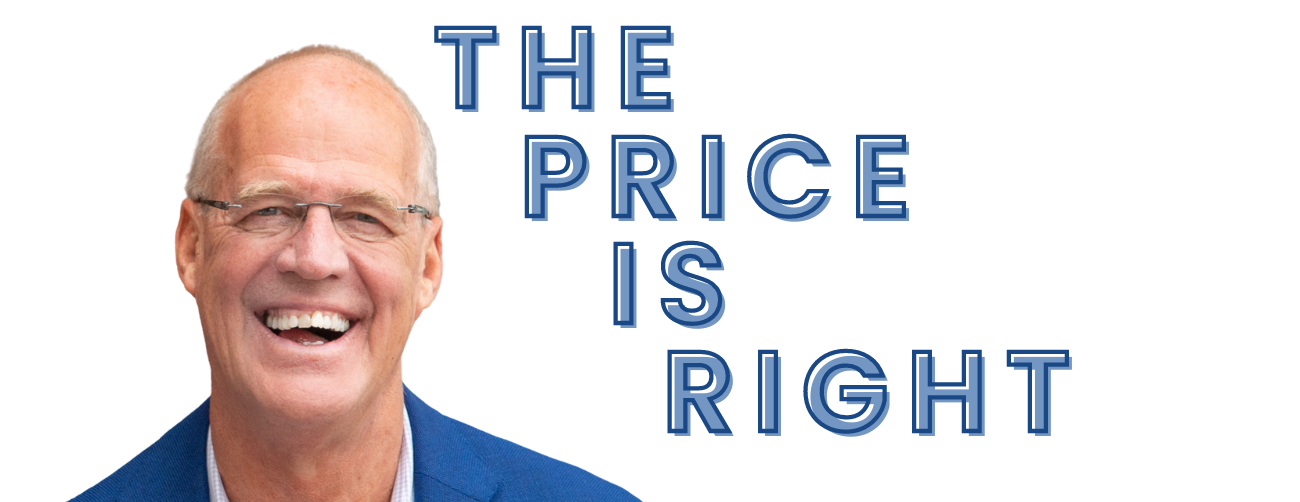
Price is Right
The Price is Right
WhizBang! Retail Training Founder Bob Negen Discusses Competitive Pricing StrategiesHow should I price my products? It’s one of the biggest conundrums that many independent retailers face. But Bob Negen, founder of WhizBang! Retail Training, says that proper pricing strategy is the quintessential low-hanging fruit of retail and is one of the easiest ways to build margins and increase sales.
Bob’s company, which he runs with his wife, Susan Negen, has helped retailers better run their business for more than 20 years, through master classes, a Mastermind Group, mentoring programs, and more. He’s built up his expertise retailer himself: He owned a retail store, Mackinaw Kite Co., and his years of experimenting with product assortment, locations, pricing, marketing, and more, equipped him with a wealth of tips and strategies to share with other retailers. The store, now called MACKite, is still owned and operated by Bob’s brother, Steve Negen.
Pricing, Bob says, is like many other skills in retail. “If you’re not doing it correctly, it costs you… either in a diminished customer experience, or it costs you in money.”
Bob also cautions against trying to compete on price against big-box national retailers and the internet. “If someone comes in and says, ‘I can buy this at Target for cheaper,’ many folks have an automatic reaction: ‘I should lower my prices,’” he says. Instead, he says, retailers should strive for their customers to have the mindset of, “They’re a little pricey, but they’re worth it.”
The bottom line: “You want to proudly charge a little more,” says Negen. “You do not want to place the price game. The minute you do, you’re in a race to the bottom… and you will lose that race.”

Five Pricing Strategies that Sell
- Price right. One of Bob’s easiest recommendations is to raise all prices to numbers ending in $0.99. “This immediately shows value,” he says. This little mental trick might seem minor, but eventually the extra few cents you’re ringing up for each item will add up.
- Create a price grid. Look at your product departments, and within each, have a selection of different price points: under $10, under $20, under $50, for example. “By being more sophisticated in your merchandise selection…. You’re making sure that for something everybody wants, there’s a price point for all of them.”
- Offer a prestige item. Similar to the price grid, within a type of item, you should have a good, better, best selection of prices. If you have one widget that is really expensive, it acts as a price anchor. Often customers will choose not the cheapest, and not the most expensive, but an item that’s somewhere in between. “It’s the Goldilocks effect,” says Negen.
- Build bundles. “Bundles are a fantastic way for you to build margins and increase the average ticket,” Negen points out. These can be gift baskets, boxes, or sets, comprised of some higher-ticket and attractive items, packaged together with inexpensive items that fit the theme.
- Train your staff. Skilled salespeople can go a long way to convincing customers to pay a little more. They should be able to skillfully engage customers, ask good questions, explain features and benefits, and recommend the right merchandise for each customer’s specific needs. “If you have great people out on your floor,” Negen says, “the whole price resistance melts away. They’re buying an item because it’s the right thing.”
- Curate the experience. A great product assortment and an enticing atmosphere… these are things that can’t easily be replicated in a big-box store or by scrolling online. And it’s an experience that post-pandemic shoppers crave. A retailer has a better opportunity than a big-box store to create a product assortment that’s new, unique, and exciting.
- Double down during inflation. While it seems like the solution to inflation is to raise your prices, it’s more strategic to double down on creating a quality experience and training staff, so that every customer who comes in the door has the best experience they can have.
Negen says the future of the independent retailer is bright. There’s a resurgence of the desire to shop in person, rather than online or in an anonymous superstore. And with the right pricing strategies, independent gift retailers can benefit from this movement and create a profitable, thriving business.
“The pandemic made people realize that their local stores are valuable,” says Negen. “There will always be some people who will shop for the lowest price, but more and more people are looking for the experience, and when they find the store that provides that experience, price becomes a lot less important.”
Bob Negen’s Strategies for Shopping Atlanta Market:
Shop the Corners: Rather than gravitating to the big booths and showrooms with the best-known brands, check out the smaller, newer vendors who don’t yet have the prime locations at Market. “There’s energy, creativity, and opportunity in these new vendors,” says Negen. Independent retailers who take a chance with these products can set themselves apart by having unique offerings, and can often negotiate favorable pricing.
Ask Questions: While retailers should always recognize that the relationships they build with their vendors are partnerships, there’s never harm in asking, “What else can you do for me?” Ask a vendor what their best terms are, or how you can earn better terms for your orders. “It’s amazing what people can do for you if you just ask,” says Negen.
Watch for Closeouts: When you’re at Market, keep your eye out for closeouts and deep discounts, and other high-quality goods that are marked down. These items are great to add to gift baskets or other bundles, creating value without spending a lot.
Learn more about WhizBang! Retail Training and get more helpful tips at whizbangtraining.com.
Atlanta Market
Tuesday, July 11 – Monday, July 17, 2023
